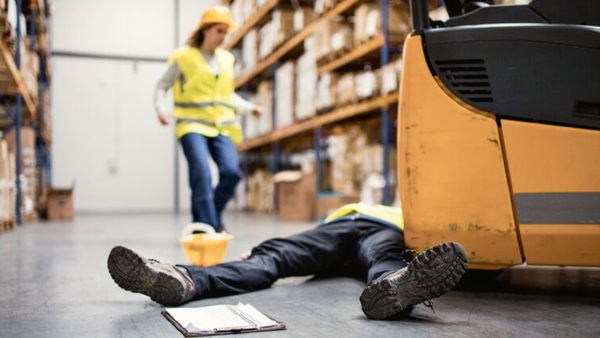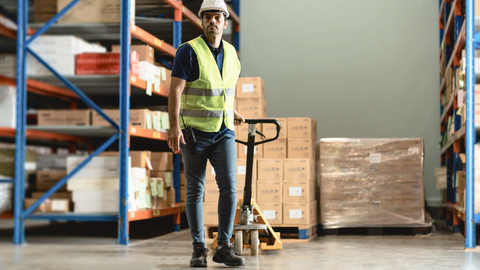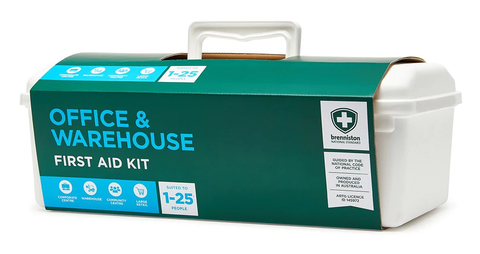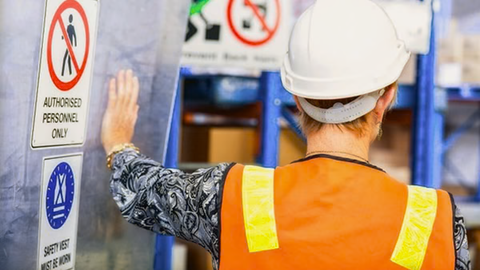Which workplaces have the highest death rates in Australia?
Share

In Australia, some workplaces are more dangerous than others and the incidence of worker death is not uncommon.
Statistics from Safe Work Australia reveal that workplace fatalities continue to occur, highlighting the urgent need for increased awareness and improved safety measures.
Several key industries in Australia are notorious for high fatality rates. Multiple factors contribute to their hazardous nature, including physical risks and cultural factors that influence safety standards and worker wellbeing.
Advocacy groups, unions and government agencies strive to protect the rights of workers and improve workplace safety standards.
Through education, legislation and advocacy campaigns they play a crucial role in boosting awareness about occupational hazards, and holding employers accountable for ensuring safe working conditions.
1. Understanding workplace safety in Australia
Workplace safety in Australia encompasses regulations, standards and practices aimed at ensuring the health and wellbeing of employees.
Safe Work Australia, the national policy body for workplace health and safety, plays a pivotal role in setting guidelines and promoting safe work practices across different industries.
Employers are legally obligated to provide safe working conditions for their employees. This includes conducting risk assessments, implementing safety protocols, and providing necessary training and accessible first aid facilities to mitigate workplace hazards and manage accidents effectively.
These safety measures not only protect workers from physical harm but also contribute to a positive work culture and increased productivity.
By understanding the importance of workplace safety and adhering to regulatory requirements, organisations can create secure environments where employees are valued and protected.
2. Statistics on workplace fatalities in different industries
Statistics on workplace fatalities offer valuable insights into the prevalence of fatal accidents across a wide range of industries in Australia.
According to Safe Work Australia the Transport, Postal and Warehousing industry experienced the most deaths at work in 2023 when fatal accidents accounted for 61 worker deaths.
Construction was the second most deadly industry with 31 worker deaths in 2023. Agriculture, Forestry and Fishing was the third most deadly with 20 worker deaths in the same period.
Transport, Postal and Warehousing, Construction, and Agriculture are consistently identified as high-risk industries due to the nature of their operations and the potential exposure to hazardous conditions.
Even over a period of ten years, those industries show the same ranking for the highest number of fatalities due to the high-risk nature of their operations and hazardous conditions. Between 2012-2022 there were:
- 882 deaths from on- and off-road vehicle incidents
- 744 deaths from being hit by moving objects
- 269 deaths from falls, trips and slips
- 161 deaths from heat, electricity and other environmental factors
These statistics serve as a crucial tool for raising awareness about occupational hazards and fostering a culture of safety within high-risk industries.
Analysing these statistics helps policymakers, employers and safety professionals identify trends, prioritise interventions, and allocate resources effectively to reduce the incidence of workplace fatalities.

3. Identifying high-risk work environments
High-risk work environments are characterised by factors that significantly increase the likelihood of accident, illness or injury occurring.
These environments may involve tasks such as driving vehicles, working amidst moving objects, operating heavy machinery or working in confined spaces, posing significant risks to the lives and wellbeing of the people who work there.
Identifying these high-risk areas is essential for implementing tailored safety measures that address the specific hazards present.
Employers must conduct thorough risk assessments to identify potential dangers, develop comprehensive safety protocols to mitigate risks effectively, and provide specialised training to employees working in these environments.
By proactively identifying and addressing high-risk work environments, organisations can minimise the occurrence of accidents, protect their workforce from harm and create a safety culture that prioritises employee wellbeing.
4. Impact of occupational hazards on workers’ health
Occupational hazards pose significant risks to workers’ health and wellbeing, potentially leading to injuries, illnesses or long-term health complications.
Exposure to harmful chemicals, repetitive strain injuries from ergonomic hazards, falls from heights due to inadequate fall protection measures, or workplace violence can have detrimental effects on employees’ physical and mental health.
The impact of these hazards extends beyond the individual worker to affect productivity, morale and overall organisational performance.
Employers have a responsibility to systematically assess workplace risks, implement controls to minimise exposure to hazards, provide appropriate personal protective equipment (PPE), maintain suitable well-stocked workplace first aid kits and offer medical support when needed.
By recognising the potential health impacts of occupational hazards and taking proactive measures to mitigate risks, employers can create safer workplaces.

5. Government regulations and safety measures
Government regulations play a crucial role in shaping workplace safety standards by establishing legal requirements that employers must follow to protect their employees.
In Australia, these regulations differ from state to state but cover a wide range of areas such as risk assessments, emergency procedures, use of personal protective equipment (PPE), training requirements for employees exposed to specific hazards, sourcing and updating necessary first aid kits and reporting workplace incidents.
Compliance with these regulations is a legal requirement and essential for creating a safe work environment that minimises risks and prevents accidents.
Additionally, state government agencies provide guidance on best practices for maintaining workplace safety standards and offer resources for employers to enhance their safety programs.
By adhering to regulatory requirements and implementing robust safety measures in line with government guidelines, organisations protect their workforce.

6. Strategies for improving workplace safety and preventing accidents
Enhancing workplace safety requires a multifaceted approach with proactive strategies aimed at preventing accidents before they occur.
Regular safety audits help identify potential hazards or areas for improvement within a workplace. Employee training programs play a crucial role in educating workers about safe work practices, emergency procedures, proper use of personal protective equipment (PPE), suitable first aid kits and hazard recognition techniques.
Implementing robust hazard identification processes allows organisations to systematically assess risks associated with different tasks or work environments and develop targeted controls to mitigate these risks effectively.
Conducting regular first aid emergency response drills helps ensure that employees are prepared to respond swiftly and appropriately in case of an incident.
Fostering a safety culture within an organisation involves promoting open communication about safety concerns, encouraging reporting of near misses or potential hazards, recognising employees for their commitment to safety practices and continuously seeking feedback on ways to improve workplace safety measures.
By integrating these strategies into everyday operations and prioritising employee wellbeing, organisations can create safer workplaces where risks are managed effectively, accidents are minimised and employees feel empowered to contribute towards maintaining a strong safety culture.
Conclusion
Workplace safety in Australia is multifaceted, encompassing a range of industries and systemic challenges that demand attention and action.
Shining a light on the most hazardous workplaces in the country, and examining the factors contributing to workplace fatalities, can foster a greater understanding of the risks faced by Australian workers.
By understanding the specific risks associated with each industry, and implementing effective solutions that prioritise health and wellbeing, stakeholders can develop targeted safety initiatives and preventative measures to enhance safety protocols that safeguard workers’ wellbeing.
By studying past incidents with a critical eye toward prevention rather than blame assignment, organisations can proactively address potential risks before they escalate into serious accidents.
Learning from these cases enables employers to implement corrective actions, improve existing safety protocols, enhance training programs for employees at all levels, and foster a culture of continuous improvement in workplace safety practices.
References
Safe Work Australia: Preliminary fatalities - 2024
WorkSafe Victoria: Workplace fatalities
NSW Government: Five deaths at workplaces in four days prompts safety reminder